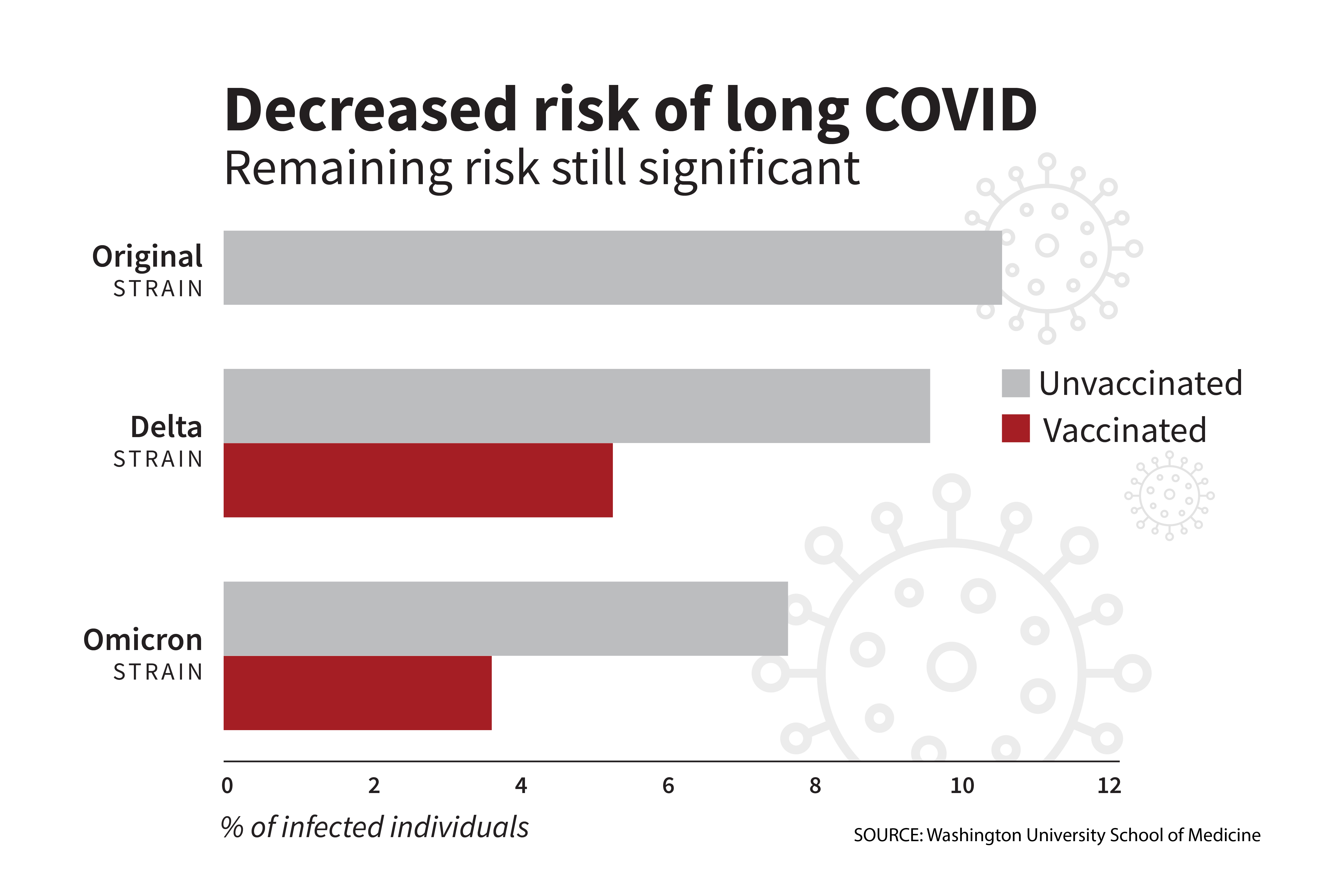Relapsed B-cell ALL is the leading cause of cancer-related deaths in children and young adults. UniSA research has shown the potential of new microfluidic technology, to improve the CAR T-cell manufacturing process by efficiently removing contaminating cancerous cells and other large white blood cells – potentially leading to greater access and lower costs of treatment.
Month: July 2024
Human or AI robot? Who is fairer on the service organizational frontline
Abstract Research has focused on exploring the distinction between human employees and AI robots. However, little is known about customer perceptions of service fairness towards AI robots (vs. human employees). A mixed-methods approach was adopted including a qualitative study which…
Going with the gut: Exploring top management team intuition in strategic decision-making
Abstract Intuition plays a vital role in strategic decision-making, enabling executives to cut through complexity and to navigate the information processing challenges posed by dynamic environments. However, enduring questions remain concerning the antecedents and the effectiveness of intuitive strategic decision-making.…
China’s future wind energy considering air density during climate change
Abstract To assess the impact of air density on future wind resources under representative concentration pathway (RCP) scenarios (RCP2.6, RCP4.5, and RCP8.5), the Coordinated Regional Downscaling Experiment-East Asia project was utilized to simulate the future air density characteristics of China…
Ushering in a brilliant future at the Advanced Photon Source
Dignitaries and luminaries attended a dedication ceremony for the upgraded Advanced Photon Source at Argonne National Laboratory. The new facility will open new doors to discovery.
Federation of State Physician Health Programs (FSPHP) is pleased to Announce Chris Bundy, MD, MPH, FASAM as Chief Medical Officer
The Federation of State Physician Health Programs (FSPHP) is delighted to announce that Dr. Chris Bundy has joined the FSPHP leadership team as the organization’s first-ever Chief Medical Officer (CMO).
American Academy of Ophthalmology Names Sarah DeParis as Director of Quality and Clinical Standards
Today the American Academy of Ophthalmology announced the appointment of Sarah DeParis, MD, as Director of Quality and Clinical Standards under the Quality and Data Science Division.
Good Timing: UNLV Study Unravels How Our Brains Track Time
Ever hear the old adage that time flies when you’re having fun? A new study by a team of UNLV researchers suggests that there’s a lot of truth to the trope.
Genetic Study Highlights Importance of Diversity in Understanding Health Disparities
The majority of genetic studies focus on people of European descent, which limits the understanding of how genes influence health in other populations.
Biodiversity Research Institute Announces Publication of a Special Issue on Mercury in Ecotoxicology
To advance scientific understanding of mercury exposure in biota from around the world, an esteemed group of almost 200 scientists from more than 30 countries collaborated on producing 18 peer-reviewed papers that form a Special Issue of Ecotoxicology titled Assessing Global Environmental Mercury Exposure in Biota and Potential Impacts on Biodiversity.
Mental health apps may help those waiting for care, study finds
The recent surge in people seeking mental health care across the country has led to long wait times for first appointments with therapists and psychiatrists. Now, a new study offers hope that while they wait to get care, patients could still get some relief by using evidence-based smartphone apps and wearable devices to track sleep and activity.
Against the odds: the genetic secrets of a rare conifer’s climate change defiance
In a remarkable twist of evolutionary adaptation, the rare Tibetan cypress, Cupressus gigantea, has shown unexpected genetic resilience. Despite facing the brink of extinction due to climate change and habitat loss, the species has experienced a significant reduction in harmful genetic mutations.
Chasing and Counting Mesons
Karthik Suresh’s doctoral dissertation on meson decay in the ongoing GlueX Collaboration at Jefferson Lab has just earned the prestigious 2023 Jefferson Science Associates (JSA) Thesis Prize.
Ginseng’s full genome sequenced: unraveling the roots of a medicinal marvel
A landmark study has successfully decoded the complete ginseng genome, unveiling the genetic mechanisms that govern saponin biosynthesis. This detailed genetic map illuminates the evolutionary and metabolic pathways of Panax ginseng, a staple in traditional medicine.
National Black Nurses Association honors Wolters Kluwer Editor-in-Chief
American Journal of Nursing Editor-in-Chief, Carl Kirton, honored with the 2024 National Black Nurses Association Trailblazer Award
Customer journey partitioning: A customer-centric conceptualization beyond stages and touchpoints
Abstract Understanding customer experiences through customer journeys has become a managerial priority. The customer experience literature divides customer journeys into stages, but these divisions disregard the customer’s perspective. Research has shown that individuals partition extended processes—such as customer journeys—into events,…
Sasin Action Learning: “Kung Bang Kachao: Developing Product and Pricing Strategies Concerning ESG and Circular Economy”
Sasin MBA students in the “Pricing Strategies in the Era of Sustainability and Digital Transformation” class, led by Assistant Professor Yupin Patarapongsant, had an excellent opportunity to immerse themselves in two fascinating eco-friendly experiences in Kung Bang Kachao, Samut Prakan.
ASME Foundation Wins Federal Grant for Registered Apprenticeship Program in Mechanical Engineering Technology
The ASME Foundation, the philanthropic arm of the American Society of Mechanical Engineers, has been awarded a $3.975 million four-year grant from the U.S. Department of Labor to develop and implement a national apprenticeship program in mechanical engineering technology.
Bubbling with benefits: hydrogen nanobubbles boost tomato antioxidants
A pioneering study has unlocked the potential of hydrogen nanobubbles to significantly augment the antioxidant content in tomatoes. This innovative irrigation technique not only fortifies the fruit with higher concentrations of health-boosting compounds but also opens new avenues for enhancing the nutritional value of agricultural produce.
Less is more: Engagement with the content of social media influencers
Abstract We draw upon theories of social media engagement to explore the factors affecting the success of the various influencer types, based on the size of their audience. We use the social media content of 8,076 influencers and employ sentiment…
Causal recipes of customer loyalty in a sharing economy: Integrating social media analytics and fsQCA
Abstract Built on the evolutionary stimulus-organism-response model, this study examines how customer encounters with different interaction mechanisms (stimuli) evoke service-quality perceptions and sentiments (organisms) that impact customer loyalty (responses) to accommodation-sharing services. It draws important service-quality dimensions and sentiments from…
Unlocking the genetic keys to cucumber perfection: a new player in flower and fruit development
Scientists have illuminated the role of heterotrimeric G protein α-subunits in cucumber’s development, a breakthrough in our comprehension of plant organ formation. This insight into the CLAVATA (CLV) signaling cascade may lead to innovative approaches in crop cultivation, promising advancements in both nutritional value and agricultural output.
FruitFlow: a new citizen science initiative unlocks orchard secrets
The “FruitWatch” initiative, a groundbreaking citizen science project, has significantly enhanced the accuracy of predicting flowering times for fruit trees across Great Britain. This improvement is vital for the agricultural sector, enabling better planning for pest management and pollinator support, which are crucial for maintaining optimal fruit yield and quality.
How do customers experience terroir? An investigation of its ability to increase brand relationship quality
Abstract While global branding and international production processes tend to blur the impact of country-of-origin mentions, consumer interest in more limited areas of origin, such as terroir, seems to be growing steadily. This research examines the ability of terroir perceptions…
From roots to leaves: the nitrogen connection to photosynthetic efficiency
Delving into the nuances of plant nutrition, researchers have discovered that the form of nitrogen intake profoundly affects the efficiency of photosynthesis in plants. This pivotal finding sheds light on how plants process and utilize nitrogen, offering critical insights for enhancing crop productivity and optimizing nitrogen use in agriculture.
Corruptive practices, digitalization, and international business
Abstract This perspective paper, including the role of an editorial, systematically reviews extant studies on ‘multinational corporations’ corruption’ and ‘digitalization’ in the international business (IB) domain, revealing why this special issue is both timely and necessary. We chronologically identify recent…
Using AI to scrutinize, validate theories on animal evolution
By harnessing the power of machine learning, researchers have constructed a framework for analyzing what factors most significantly contribute to a species’ genetic diversity.
AMR Expands Clinical Research Offerings in the Carolinas with Waccamaw Dermatology Partnership
Alliance for Multispecialty Research (AMR), a leading clinical research site company, and Waccamaw Dermatology, renowned for its comprehensive, specialized dermatological care as one of the largest physician-owned and led dermatology practices in the Carolinas, today announced a strategic partnership that expands access to clinical trials in the Carolinas.
Cultural bridges in Business: Critical review and future directions in cross-cultural B2B relationships
Abstract With the coming of age of business‐to‐business (B2B) marketing in the last three decades, the influence of culture on cross-cultural B2B relationships has received considerable attention in the academic literature in recent years. Despite the efforts, the research domain…
Peeling back the genetic layers of stone fruit domestication
Unraveling the genetic underpinnings of stone fruits, a pivotal study explores the genomic landscape of apricot, peach, plum, and mei. It uncovers the signatures of selection pressures driving their domestication and adaptation, revealing a rich tapestry of genetic diversity and evolutionary convergence that shapes the traits we value in these crops.
Mulberry mystery solved: genetic insights into anthocyanin richness
Unlocking the genetic secrets of mulberry anthocyanin content, a study illuminates the regulatory mechanisms that dictate fruit color and nutritional quality.
Decoding chieh-qua: unveiling the genetic secrets of a cultivated cucurbit
A pivotal study has successfully sequenced and assembled the chromosome-level genome of chieh-qua, a cucurbit crop with significant economic and cultural importance in Asia. The high-quality genome assembly provides a comprehensive genetic blueprint, revealing the crop’s genetic diversity and evolutionary history.
Nature’s gender reveal: key gene controls female flowers in Cucurbita pepo
A transformative study has pinpointed the CpMYB62 transcription factor as a key determinant in the sex differentiation of Cucurbita pepo flowers. This gene mutation, which impedes the female floral transition, may be partially reversed by ethylene, indicating its critical role in ethylene-mediated sex determination pathways.
Pineapple peel’s red secret: scientists uncover the molecular mechanism behind its color
A pivotal study has identified AcMYB266 as a crucial transcription factor that governs the red coloration in pineapple peels, a genetically complex trait. This discovery is set to revolutionize pineapple breeding, offering a pathway to enhance fruit quality and appearance by manipulating anthocyanin levels, thereby unlocking both commercial and nutritional potentials.
Unlocking the genetic code of amur grape: insights into plant cold tolerance and evolution
A pioneering study has meticulously pieced together the high-quality genome sequence of the Amur grape, Vitis amurensis, unveiling its evolutionary journey and the genetic secrets behind its exceptional cold tolerance.
Blueprint for blueberry: decoding the genetic pathways of plant regrowth
A pivotal study has shed light on the genetic factors that govern the ability of highbush blueberries to regenerate from shoots, a critical process for plant breeding and genetic engineering. By comparing the transcriptomes of two genotypes with contrasting regeneration rates, researchers identified key auxin-related genes and transcription factors crucial to this process.
Partner or servant? The influence of robot role positioning on consumers’ brand evaluations ☆
Abstract Despite the increasing use of robots in marketing to improve consumers’ perceptions of brand image, relatively little is known about how the positioning of robots (i.e., as either partners or servants) influences consumer evaluations of brands employing service robots.…
Does CEO temporal myopia always lead to firm short-termism? The critical role of CEO optimism and perceived opportunity costs
Abstract Literature suggests that chief executive officers (CEOs) often discount long-term returns more than short-term gains, resulting in firm short-termism. However, the findings from previous studies are not conclusive. Drawing on upper echelons theory, we argue that a CEO’s optimism…
Artificial intelligence and consumer behavior: From predictive to generative AI
Abstract Since the introduction of ChatGPT, the leading example of Generative Artificial Intelligence (GenAI), the research community and the general public have been captivated by GenAI’s remarkable advances in performance, and its ability to both imitate and, in some respects,…
The inauthentic consumer: Consequences of self-inauthenticity for possession disposal
Abstract Self-inauthenticity is characterized by feeling out-of-touch with one’s true, authentic self. Here, we propose that self-inauthenticity causes consumers to also feel out-of-touch with objects that are extensions of the self—namely, their material possessions. We call this effect possession alienation and suggest…
Cool new research promises a greener future for supermarkets
University of South Australia researchers have worked with industry to build a world-first, energy-efficient refrigeration system that could revolutionise how we cool supermarkets, hospitals, abattoirs and other systems.
International experts descend on Adelaide to examine how ‘vernacular’ architectural insight can solve some of our biggest global challenges
Internationally renowned architectural scholars will descend upon Adelaide, South Australia, for a conference exploring the varied nature of modern vernacular studies and its insight for 21st century problems.

다시 한번 미국 최고 병원 순위에 이름을 올린 Cedars-Sinai
Cedars-Sinai는 U.S. News & World Report의 “2024~25년 최고의 병원” 순위에서 9년 연속 명예 목록 에 선정되었습니다.

Risk of long COVID declined over course of pandemic
The risk of long COVID has declined over the course of the pandemic, although it remains a persistent threat. Researchers from Washington University School of Medicine in St. Louis identified vaccination as a primary factor in reducing the risk of long COVID.

Expert Available: 5 Year anniversary of El Paso Massacre on Aug. 3
Aug. 3, 2024 marks the fifth anniversary of the El Paso massacre, one of the deadliest anti-Latino attacks in recent U.S. history. In 2019, a far-right extremist committed a deadly mass shooting at a Walmart in El, Paso Texas, a…

Second “You Belong in Quantum” Series Highlights Unconventional Career Pathways
The second virtual session on April 30 featured diverse speakers discussing their unique journeys into QIS.
EveryLife Statement on the Creation of FDA Rare Disease Innovation Hub
he EveryLife Foundation for Rare Diseases commends the Food and Drug Administration (FDA) on today’s announcement of its intention to create a Rare Disease Innovation Hub. Co-chaired by CDER Director, Dr. Peter Marks, and CBER Director, Dr. Patrizia Cavazzoni, the Hub will directly engage patients and the public to inform its strategic agenda.

Although Tiny, Peatland Microorganisms Have a Big Impact on Climate
Polyphenols are generally toxic to microorganisms. In peatlands, scientists thought microorganisms avoided this toxicity by degrading polyphenols using an oxygen-dependent enzyme, and thus that low-oxygen conditions inhibit microbes’ carbon cycling.
How Effective Is MS Medication Across Racial and Ethnic Groups?
For people with relapsing-remitting multiple sclerosis (MS), a new study has found that the drug ofatumumab is more effective than teriflunomide at helping people across racial and ethnic groups reach a period of no disease activity. The study is published in the July 17, 2024, online issue of Neurology®, the medical journal of the American Academy of Neurology.
Study: Uninsured, Hispanic People Less Likely to Be Referred to Care After Stroke
Insurance coverage, ethnicity and location may all play a role in a person’s ability to receive care after a stroke, according to a study published in the July 17, 2024, online issue of Neurology® Clinical Practice, an official journal of the American Academy of Neurology.